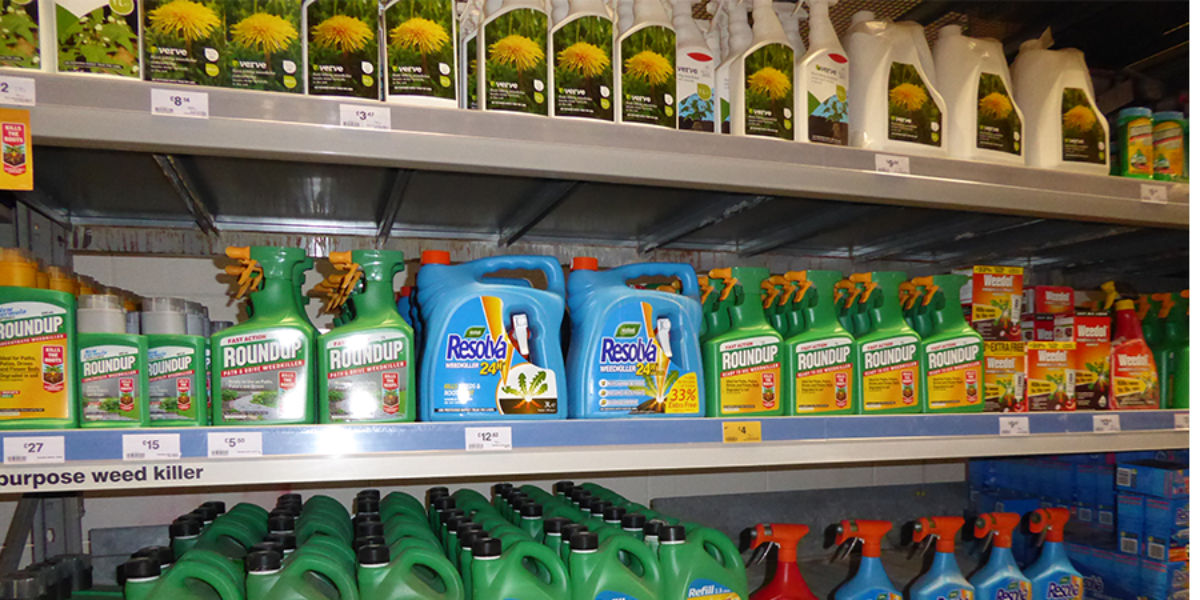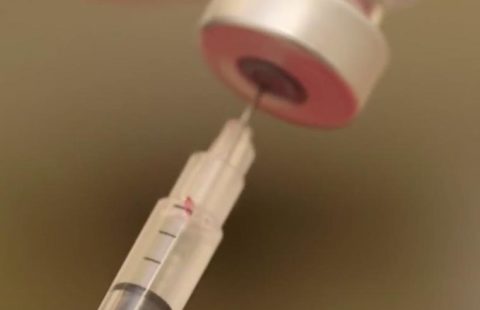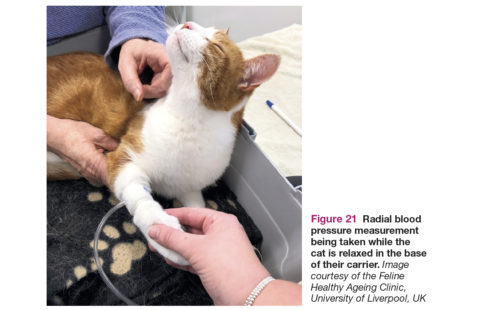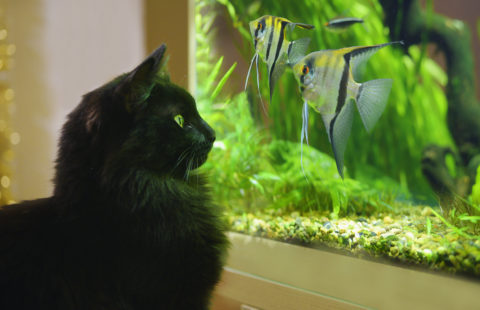Cats can inadvertently become exposed to and potentially poisoned by weed killers. In this article we look at where the dangers lie, how to avoid exposure and what to do if you suspect your cat has been poisoned.
Weed killers or herbicides are used for the control of weeds. A large number of products for use in the garden are available but these domestic products (as opposed to professional agricultural products) only contain a few different herbicidal compounds. Cats are generally exposed to weed killers during, or soon after, their use by walking on treated grass or brushing against wet plants and then grooming. They may also walk in or lick up spills or drips from sprayed weeds, or chew treated plants, or (rarely) be exposed to ‘spray drift’.
It is important to find out which particular product a cat may have been exposed to. Noting the name or ingredients is important, so that if the cat requires treatment the vet can decide which is the best approach. Information can also be found on a pesticides database which is freely available on the internet: see http://icatcare.org/advice/keeping- cats-safe for more information.
Glyphosate
Glyphosate is a widely used and readily available herbicide. It is primarily available in liquid formulations but these may vary in strength. Many products contain a surfactant, polyoxyethylene amine (POEA), which improves the ‘wettability’ of plants for maximum coverage and aids the glyphosate in penetrating through the plant surface.
Glyphosate is considered of low toxicity and it is this surfactant present in many liquid preparations that is believed to be responsible for some of the toxic effects.
Signs of glyphosate poisoning
Vomiting, anorexia and lethargy are common signs in cats after glyphosate exposure. There may also be diarrhoea, tremors, drowsiness and dilated pupils. Severe respiratory signs are a feature of glyphosate exposure in cats and can be fatal. Eye and skin irritation are also possible after exposure to glyphosate-containing products.
Treatment
If the cat gets a product containing glyphosate on its fur or feet, it should be thoroughly washed. If a cat has ingested a small quantity, particularly of a dilute solution from grooming or licking a spill or from a wet plant, the vet may wash out the cat’s mouth and give oral fluids. If there is definite ingestion, the vet will give more serious treatment.
Chlorophenoxy derivatives
The chlorophenoxy derivative weed killers include 2,4-D (2,4-dichlorphenoxyacetic acid), MCPA (2-methyl-4-chlorophenoxyacetic acid), mecoprop and dichlorprop. They are frequently found in combinations in products and are also used in lawn feed and weed products. They are available in granular form or as liquid.
Signs of poisoning with chlorophenoxy derivatives
These compounds are irritants and can cause salivation, vomiting, abdominal discomfort and lethargy. In severe cases, there may be blood in the faeces, anorexia, progressive weakness and there may be ulcers in the mouth.
Treatment
Treatment of poisoning from chlorophenoxy derivatives is supportive. There is no specific antidote. In many cases exposure is minimal and decontamination of the paws and fur (using a detergent) and washing the mouth out with water, with rehydration and treatment to prevent vomiting is all that is required.
Ferrous sulphate
Ferrous sulphate is used as a moss killer. It may be available as the chemical itself, but is more commonly found in lawn feed, weed and moss killer products which contain a fertiliser (the feed), a herbicide (the weed killer, often a chlorophenoxy derivative) as well as ferrous sulphate (the moss killer).
These products are generally used to revive the lawn during the growing period and are available as granular products for sprinkling on the lawn or products to be diluted in water and poured over the lawn.
Signs of ferrous sulphate poisoning
An overdose of iron can cause toxicity because the body has no system of eliminating excess iron. Signs include gastrointestinal irritation and more severe problems if a lot is ingested. However, this is unlikely to occur unless the cat has eaten a large quantity of moss killer. Walking on a treated lawn may cause irritation on the paws, and grooming the product off or licking treated grass may cause vomiting, salivation, diarrhoea and increased frequency of drinking.
Treatment
If a cat is exposed to a ferrous sulphate-containing product, its feet or fur should be washed with a detergent and rinsed. If veterinary treatment is required it may be something to prevent the cat being sick or to rehydrate it if necessary. In the unlikely case of a cat ingesting a large quantity of a ferrous sulphate-containing moss killer, more serious treatment is required.
Fatty acids
Octanoic acid (caprylic acid), decanoic acid (capric acid) and nonanoic acid (pelargonic acid) are examples of naturally occurring fatty acids found in some weed killers, particularly those labelled organic.
Nonanoic acid is found in the oil of pelargonium (a common bedding or house plant) and has also been used as a cat repellent. The other two fatty acids have names referring to goats (capr-) because they have a goaty odour.
Signs of fatty acid poisoning
Few cases of exposure have been reported in cats probably because they dislike the smell. In the small number of cases reported to the Veterinary Poisons Information Service (VPIS), cats have developed irritation or ulceration in the mouth, anorexia, salivation, and a high temperature. There is a risk of severe skin irritation from prolonged contact.
Treatment
A cat exposed to a herbicide containing fatty acids should have its paws or fur cleaned with a detergent and rinsed off. If the cat has licked the product or groomed it off its coat, the vet may wash out the cat’s mouth and offer supportive pain relief, feeding and treatment if necessary.
Conclusion
Many different products are available for the control of garden weeds, but they generally contain only a few different herbicidal compounds. Always read the packaging on herbicide products and use them according to the manufacturer’s instructions.
It may be difficult to prevent access to these products in free-roaming cats and if you are concerned that the cat may lick treated plants or spills of herbicide, it may be best to avoid their use and control weeds by manual removal.






